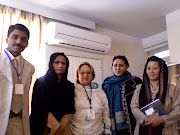Tourism, handicrafts, agriculture, forests, lakes... these have formed Jammu and Kashmir’s basis of survival, always. They still constitute 98% of the state’s economy and sustain 90% of its population.? Kashmir’s economy is nothing but a sensitive and organised use of its ecology. After two decades of living under the shadow of the gun, hope is finally making a comeback in the state. The new Union government led by Manmohan Singh has pledged to solve the Kashmir problem by all means, Kashmir will have to turn to its immense environmental resources to sustain this resurgence.
In its meeting held on 23 January 2004, the state cabinet accorded approval to its path-breaking Industrial Policy 2004. Environmental protection was given thrust in this policy. It states that “Environment protection has become an issue of global importance. To protect our environment and prevent damage to our land and water resources, the government would support water management systems with central and state’s resources.” Why has the government turned its attention to the environment?? Can proper environmental management policies bring peace to the valley? These are questions which are worth examining.
?
India’s largest fresh water lake, the Wular, supplies around 40% of the valley’s fish and the lotus stem trade and is a tourist attraction. What the Nile is to Egypt, Wular is to Jammu and Kashmir. According to the London-based Kashmir Environment Watch Association, “due to siltation, expanding human settlement, ineffective water policy and night curfews this 202sq.km. lake is reduced to just 74sq.km. in three decades”. If the Wular is dying, Kashmir’s most famous icon ? the Dal Lake is already being prepared for its funeral. The Lake and Waterways Development Authority, created to save the lake with a budgetary allocation of Rs.500 crore, is busy preparing software that will decide when the Dal Lake would die. Death of the Dal means a life sentence for the 40,000 people who reside in and eke out their livelihood from it.
The Environment Minister Ghulam Mohi-ud-Din Sofi said that the cultivation of saffron, one of the mainstays of the sector, has been badly hit due to poor water planning. Kashmiri saffron, which provides a livelihood to at least 7 lakh people, is losing its market to low-grade and cheaper saffron from Iran. Horticulture, another cash-earning sector is similarly afflicted, again due to the poor water management and lack of processing facilities.
Of late, the state has been gearing up for another conflict: rights over water. On 2 March 2003, the Jammu and Kashmir assembly passed a resolution asking the central government to review the Indus Water treaty with Pakistan. The Indus River Water Treaty is fast emerging as the bone of contention between India and Pakistan. The treaty gives Pakistan unrestricted access to water of three rivers ? Chenab, Jhelum and Indus, flowing through Jammu and Kashmir. While the treaty eased Punjab’s water woes, Jammu and Kashmir suffered as it could not harness its rivers to their full potential. The treaty limits Jammu and Kashmir’s right to build storage reservoirs on the Jhelum and Chenab. This, the state argues, has meant that it has had to sacrifice an estimated potential power generation capacity of 15,000 MW. The state contends that it should have received compensatory access to power and water generated on the Ravi, Sutlej and Beas systems. According to Qazi Mohammed Afzal, Minister for Public Health, but for the treaty, the state could have increased its area under irrigation by one lakh acres, over and above the 83,000 acres which was under irrigation before 1960. The Finance Minister, Muzzaffar Hussain Beig, pointed out that the treaty’s implications affect the farmers in the state who have requested the government to take a strong stand against it. Jammu and Kashmir is also presently facing severe water scarcity as a result of a six-year dry spell.
In view of these issues, management of water in the state assumes critical importance. In the Kandi area in Jammu, the water management programmes need to utilise the 500 ponds that are in ruins at the moment.? Some of these ponds, spread over 10 acres, can meet the entire needs of the region if properly planned. The government’s two major irrigation programmes ? Integrated Watershed Development Programme and the Ravi-Tawi Irrigation Project ? still have lessons to learn on water management.? A case in point is that of the proposed Rs.57 crore Kandi Development Project. The World Bank funded Integrated Watershed Programme is about to complete its second phase this year. During an interaction with farmers in February, the Chief Minister admitted that the state must revert to traditional means for ensuring water security at the grassroots.












No comments:
Post a Comment